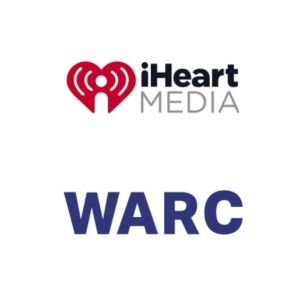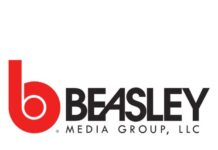
Audacy CEO David Field is known for repeating the statement, “Radio is punching below its weight class.” That remains true today when you compare how much time consumers spend with radio and how much money brands spend on radio. A new iHeart commissioned study shows audio still has a long way to go to even out the playing field.
Marketing Intelligence company WARC released a study Tuesday it conducted for iHeartMedia on media consumption and how that compares to how companies invest in audio. The study includes case studies about Coca Cola and Ritz Crackers who used radio and for Ford which used podcasting to get their message out about the new Bronco.
In a nutshell, the new data states that while consumers spend 31% of their media time with audio brands only allocate 8.8% of their media budget on audio, with 25% of brands not spending a penny on the medium at all.
iHeart wants to push out the new data to try to help convince buyers to spend more of their ad budgets on both radio and in podcasting.
When we asked about how the study was conducted, when it was conducted and how many people were involved in the study, WARC did not respond to our request. Here’s all we know about those details. It was conducted in September of this year, it was done for iHeartMedia, and it was an “analysis of data from WARC’s proprietary knowledge base and research, and in consultation with our experts.” We were unable to find out who these experts were.
WARC says its information states that consumers of every generation are spending more and more time with audio content.
WARC is forecasts audio advertising spend in the US (radio, podasting and streaming) to reach $13.9 billion this year, a double-digit recovery (+10.9%) from 2020.
WARC came up with four types of advertiser attitudes towards audio:
· Audio Avoiders, the 25% of advertisers who do not invest in audio at all
· Broadcast Believers, who have seen the benefits of radio and are beginning to delve into more forms of audio
· Digital Only, those who have started to invest but are missing out on the full suite of audio options, particularly the 90% reach of broadcast radio
· Cross-Platform Champions, who explore audio’s full potential and continue to test, learn from and optimize their investments across platforms.
The final report also includes information from Nielsen about the power of radio.
Here are links to the advertiser success stories:
Coca-Cola
Ritz Crackers
Ford
You can also download the entire WARC study HERE







Imagine if radio invested in the product as much as we ask the advertisers to. Many of these comments are right on. You may say I’m a dreamer…..
The solution for radio’s revenue challenges is straight forward – I’ve been able to deliver it inside and outside our industry as a seller, a former two-time station owner, and as a marketing and sales strategist.
This generates 6/7/8/9 figure sales outcomes: give advertisers 52 weeks of documented sales results directly attributable to the medium.
For more specifics in 8 of my Radio Ink article/replies to articles on generating documented sales results, using the quotations and the plus sign to render the largest number of articles, Google: “andy mcnabb” +radioink.com.
I’m always happy to pay it forward and freely share a number of ways this is done.
When radio used to be more powerful, even smaller market stations carried national ads by Coca-Cola, Pepsi, Miller Brewing, GM, Ford, Wrigley’s, McDonald’s, etc. These were usually really high quality spots with top notch production and were as pleasant to listen to as they were at selling the products. This was also when spot breaks were more frequent and much shorter. The spots I hear now during a typical (large market) spot break are mostly mediocre and many are junk. Lackluster production, sometimes for questionable products. Unpleasant to listen to and easy to tune out. Too many featuring the 18 year old girl with apparent strep throat doing the v/o work and trying to sound with it. Nor does it help that those ads are stuck into a 6 minute spot break that nobody is going to sit through.
My suggestion: listen to some airchecks from the 60’s, 70’s and 80’s. We can learn a lot from the past, when things worked.
Still, radio, in general, steps into the squared circle as the pencil-necked, emaciated and wholly untrained pretender-geek to the heavyweight champeen’s throne.
All it (radio) provides is a load of smack talk just before the inevitable beatdown.
Earned creds have yet to be demonstrated.
Of the big radio CEOs, David Smith is the least qualified to turn the industry around.
His music stations are all becoming individual outlets for his national jukebox programming.
And the heritage CBS Radio all-news and news/talk stations he acquired have lost most of their prestige and luster.
To play on the “weight class” metaphor, the likes of Smith are causing radio to dramatically lose weight, in a grotesque and unbelievable way. Sad.
David Field…
I guess if all radio wants is national money.
Survey new companies and the under 25 year old
Demo.
The brands in the study are over 100 years old.